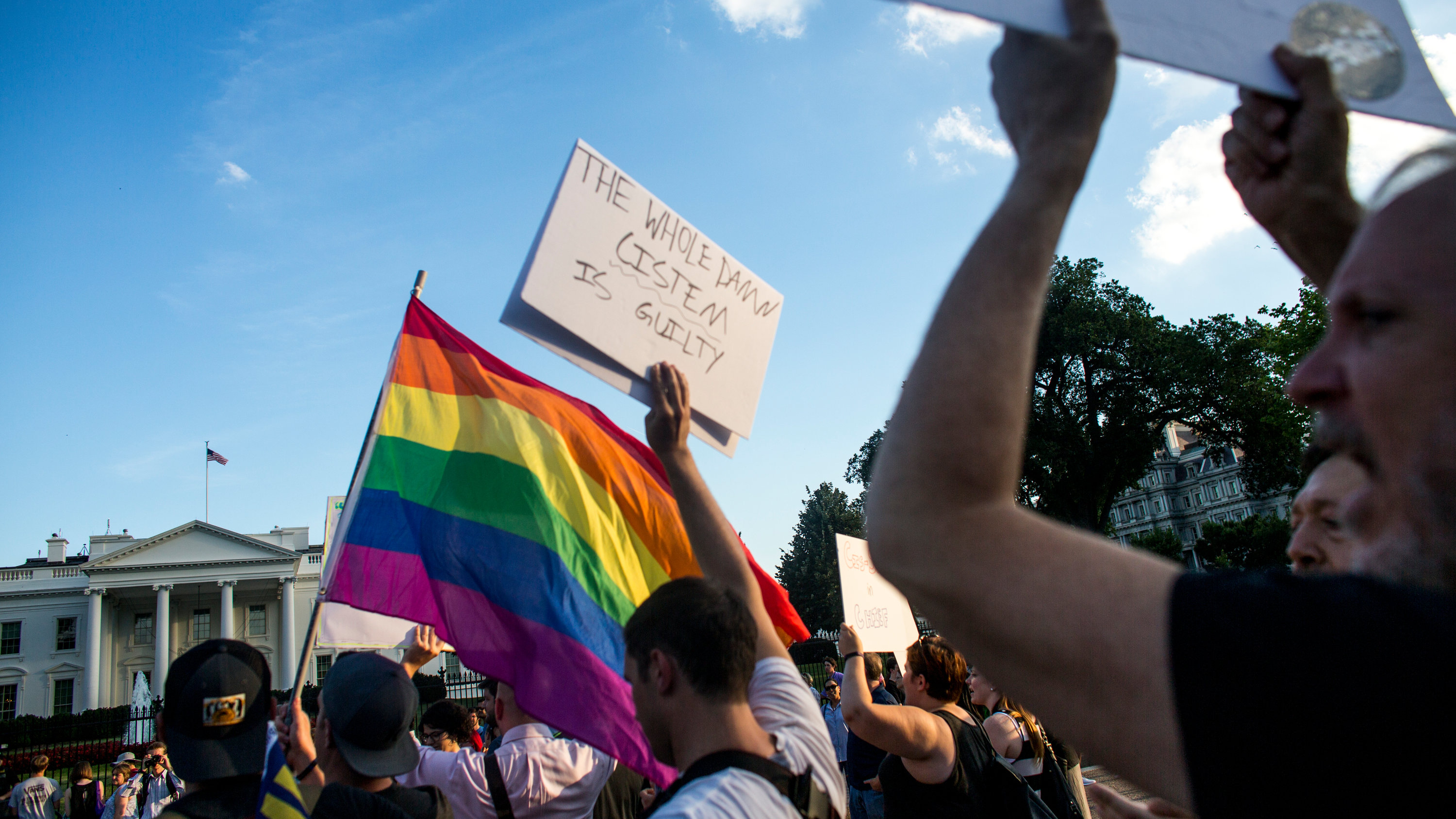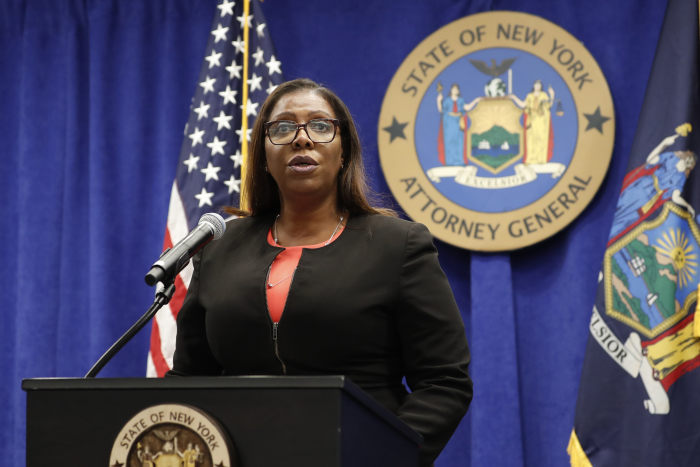Impact Of Trump Order: IHSAA's Ban On Transgender Athletes In Girls' Sports

Table of Contents
The IHSAA's Policy and its Rationale
The IHSAA's ban prohibits transgender girls from competing in girls' sports, based on their assigned sex at birth, not their gender identity. This policy, implemented in alignment with the Trump administration’s interpretation of Title IX, outlines specific eligibility requirements focusing heavily on biological sex rather than gender identity. The process for appealing this decision is limited and often results in exclusion.
Specifics of the IHSAA's Ban:
The IHSAA's policy uses what many consider outdated and controversial methods of “gender verification," often relying on factors like chromosomes and hormone levels. These eligibility requirements fail to adequately account for the diversity of transgender experiences.
- Stated Justifications: The IHSAA maintains the ban is necessary to preserve fair competition and ensure the safety of cisgender girls. Arguments often center on perceived physical advantages that transgender girls might possess.
- Counterarguments: Critics argue that these justifications lack scientific basis and rely on harmful stereotypes. Numerous studies show that transgender girls do not possess an inherent athletic advantage over cisgender girls, and the focus on physical differences ignores the significant psychological and social benefits of sports participation for all youth.
- Scientific Evidence: While some studies have been cited to support the IHSAA’s stance, many more studies have demonstrated that transgender women participating in sports do not gain a competitive advantage, and the focus should be on inclusive policies.
Legal Challenges and the Trump Administration's Influence
The IHSAA's policy directly contradicts the growing body of legal precedent supporting the inclusion of transgender individuals in accordance with their gender identity. The Trump administration's narrow interpretation of Title IX, aiming to roll back protections for transgender students, significantly influenced the IHSAA's decision.
Title IX and its Role:
Title IX prohibits sex-based discrimination in schools receiving federal funding. While the Trump administration attempted to redefine "sex" in a way that excluded transgender individuals, this interpretation has been largely challenged and rejected under the Biden administration. The evolving legal landscape regarding Title IX compliance and sex discrimination remains uncertain but has serious implications for the future of the IHSAA's policy.
- Legal Challenges: Several lawsuits have challenged the IHSAA's ban, arguing it violates Title IX and the Equal Protection Clause of the Fourteenth Amendment.
- Potential Legal Outcomes: The legal challenges could set a significant precedent, impacting how other states and athletic organizations handle the participation of transgender athletes. A ruling against the IHSAA could require significant changes to their policies, and even potentially provide a national model for inclusive policies.
- The Role of the Courts: Courts will play a crucial role in determining the legality of policies like the IHSAA’s ban, shaping the future of transgender participation in sports across the country.
The Impact on Transgender Athletes and the Broader Community
The IHSAA's ban has devastating consequences for transgender girls and the broader transgender community. Exclusion from sports participation negatively affects their physical and mental health, social development, and sense of belonging.
Psychological and Social Consequences:
The emotional toll of being barred from participating in sports alongside their peers is significant. Transgender girls face increased risks of depression, anxiety, isolation, and even suicidal thoughts.
- Inclusivity and Participation: Sports are vital for youth development, fostering teamwork, self-esteem, and a sense of community. Denying this to transgender girls undermines their overall well-being.
- Increased Rates of Mental Health Issues: Studies show a higher prevalence of mental health challenges among transgender youth, and exclusion from sports only exacerbates these issues. The ban actively contributes to a culture of discrimination and stigma.
- Advocacy Groups: Organizations like the ACLU and PFLAG are actively working to support transgender athletes and fight for their right to participate in sports.
Alternative Approaches and Future Directions
Finding a balance between inclusion and fairness in sports requires creative and thoughtful solutions that prioritize the well-being of all athletes. Simply focusing on the perceived physical differences ignores the myriad of other factors impacting athletic performance.
Finding a Balance Between Inclusion and Fairness:
Rather than exclusion, a focus on inclusive policies would better serve all students. This means moving away from harmful and inaccurate gender verification processes and instead focusing on fostering participation for all students.
- Potential Solutions: Alternative approaches, such as hormone level regulations or creating separate competitive divisions based on factors beyond simple biological sex (such as physical capabilities and skill level) could be explored.
- Successful Examples: Many states and organizations have successfully implemented inclusive athletic policies without compromising fair competition, demonstrating that inclusion is possible. These examples showcase a willingness to explore solutions that prioritize the well-being of all students.
- Long-Term Implications: Choosing a path of inclusion, rather than exclusion, promotes inclusivity and acceptance of all students. This promotes mental health and wellbeing, as well as a safer environment for all students involved.
Conclusion
The IHSAA's ban on transgender girls reflects the significant influence of the Trump-era policies on the treatment of transgender individuals. The policy's legal challenges, its profound impact on transgender athletes' well-being, and the existence of more inclusive alternatives highlight the urgent need for a reassessment. This decision sets a concerning precedent, raising significant concerns about fairness and the rights of transgender youth in sports.
The fight for the inclusion of transgender athletes in girls' sports is ongoing. Contact your representatives, support organizations advocating for transgender rights, and stay informed about the legal battles and policy developments surrounding this issue. Together, we can work towards a future where all athletes, regardless of gender identity, have the opportunity to participate in sports and experience the numerous physical and psychological benefits they provide. Let's work together to create a fairer and more inclusive environment for all transgender athletes in girls' sports.

Featured Posts
-
 Golden Knights Barbashev Nets Overtime Winner Ties Series Against Wild
May 10, 2025
Golden Knights Barbashev Nets Overtime Winner Ties Series Against Wild
May 10, 2025 -
 Gpb Capital Founders Conviction David Gentile Gets 7 Years For Fraud
May 10, 2025
Gpb Capital Founders Conviction David Gentile Gets 7 Years For Fraud
May 10, 2025 -
 The 200 Million Question Examining Perus Emergency Mining Ban On Gold Output
May 10, 2025
The 200 Million Question Examining Perus Emergency Mining Ban On Gold Output
May 10, 2025 -
 Does The Us Government Fund Transgender Mouse Research Facts And Figures
May 10, 2025
Does The Us Government Fund Transgender Mouse Research Facts And Figures
May 10, 2025 -
 Trumps Plan To Restrict Migrant Detention Challenges
May 10, 2025
Trumps Plan To Restrict Migrant Detention Challenges
May 10, 2025
